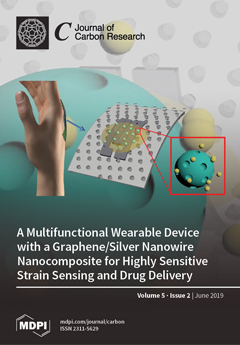This paper reports original results on the synthesis and characterization of Fe/C/N ORR electrocatalysts obtained by a combination of CO
2 laser pyrolysis and thermal post-treatment. The precursor liquid media, consisting in a 14 g·L
−1 iron III acetylacetonate solution in toluene, was
[...] Read more.
This paper reports original results on the synthesis and characterization of Fe/C/N ORR electrocatalysts obtained by a combination of CO
2 laser pyrolysis and thermal post-treatment. The precursor liquid media, consisting in a 14 g·L
−1 iron III acetylacetonate solution in toluene, was aerosolized and then exposed to a CO
2 laser beam for pyrolysis in continuous flow. Ammonia was used in the pyrolysis process, both as the laser wavelength absorbing gas (i.e., energy transfer agent) and as the sole source of nitrogen. After the laser pyrolysis step, the material was submitted to thermal post-treatment under argon on the one hand, and ammonia on another hand. The three materials—one as-prepared, one thermally treated under argon, and one thermally treated under ammonia—were characterized, in particular, through specific surface area determination, XPS analysis, and ORR measurement. It was found that both kinds of thermal treatment significantly improved the ORR performances, which were evaluated on porous electrodes. Indeed, while the as-prepared material showed an ORR onset potential at ≈790 mV vs. the standard hydrogen electrode (SHE) in HClO
4 1M, the argon treatment increased the latter to ≈820 mV, and the ammonia treatment led to a very high value of ≈910 mV. Selectivities of 3.65 and 3.93 were measured for the argon and ammonia treated materials, respectively. The outstanding ORR performance resulting from the ammonia treatment is probably related to the very high BET specific surface area measured at 1130 m
2·g
−1, which was notably obtained without using any templating or sacrificial component in the precursor media.
Full article





